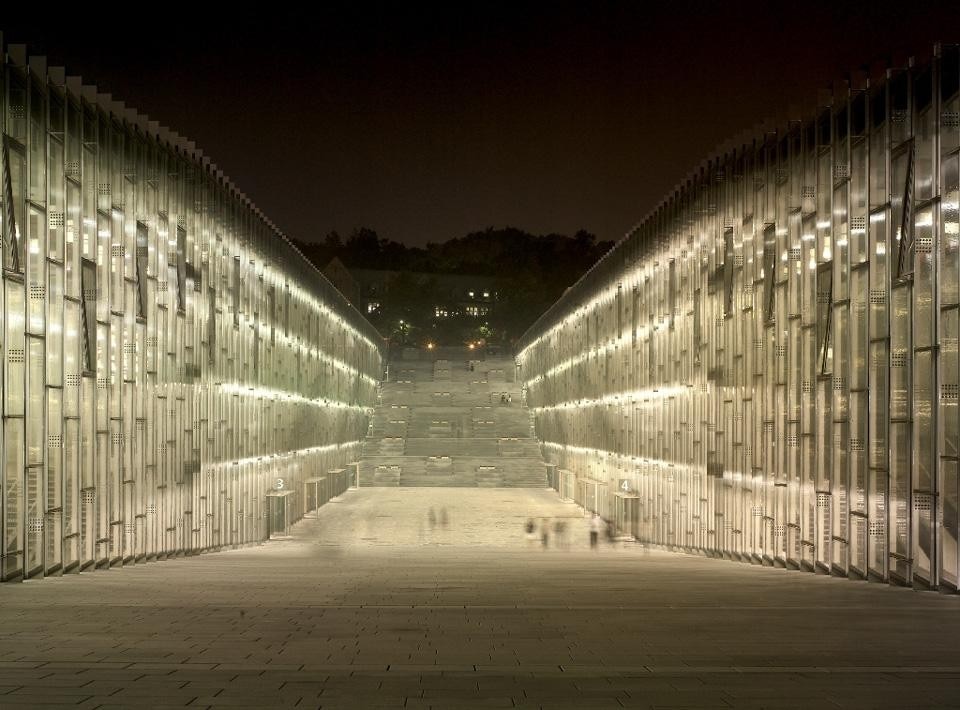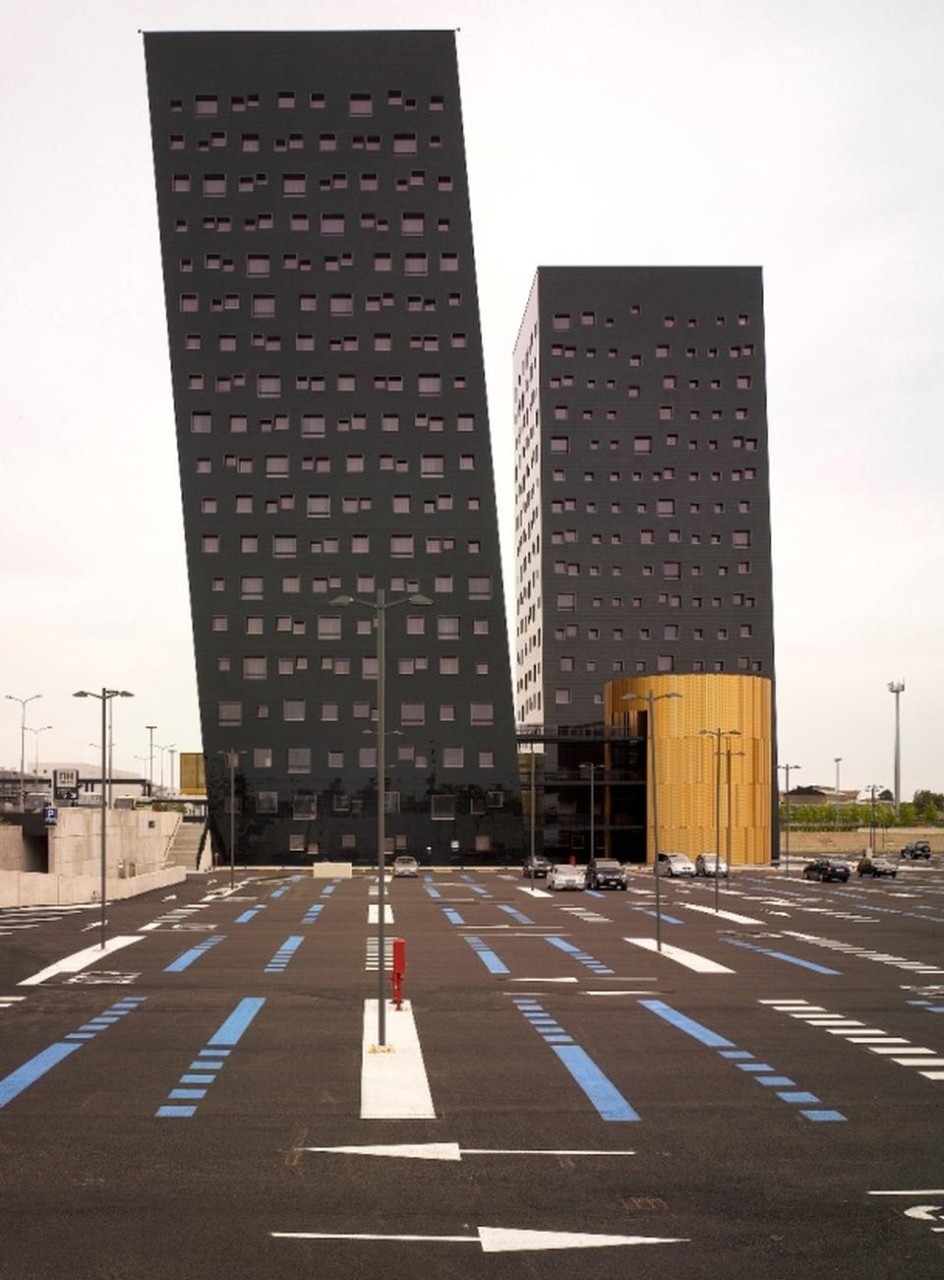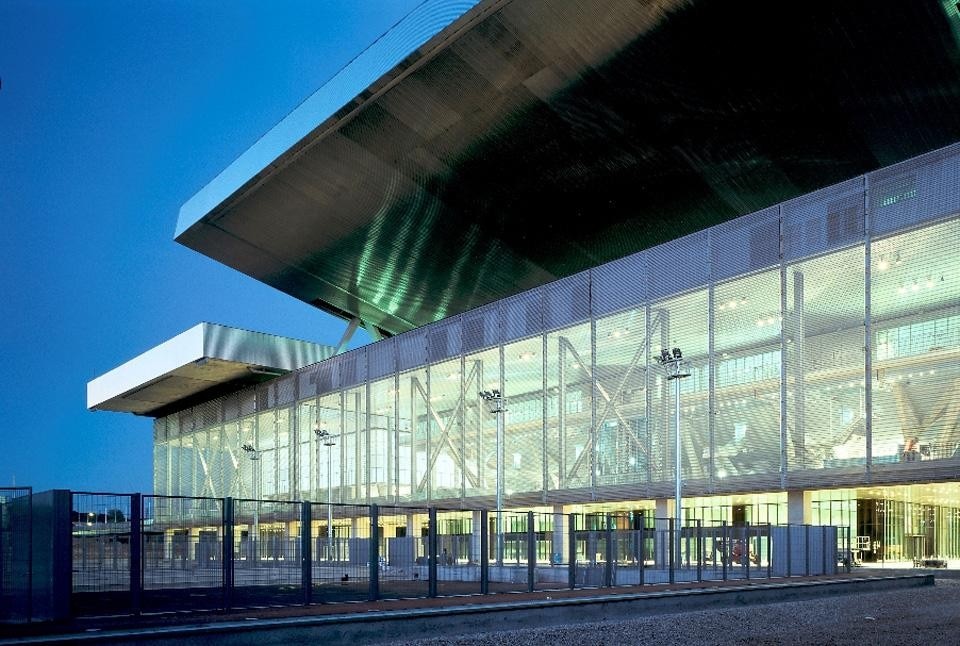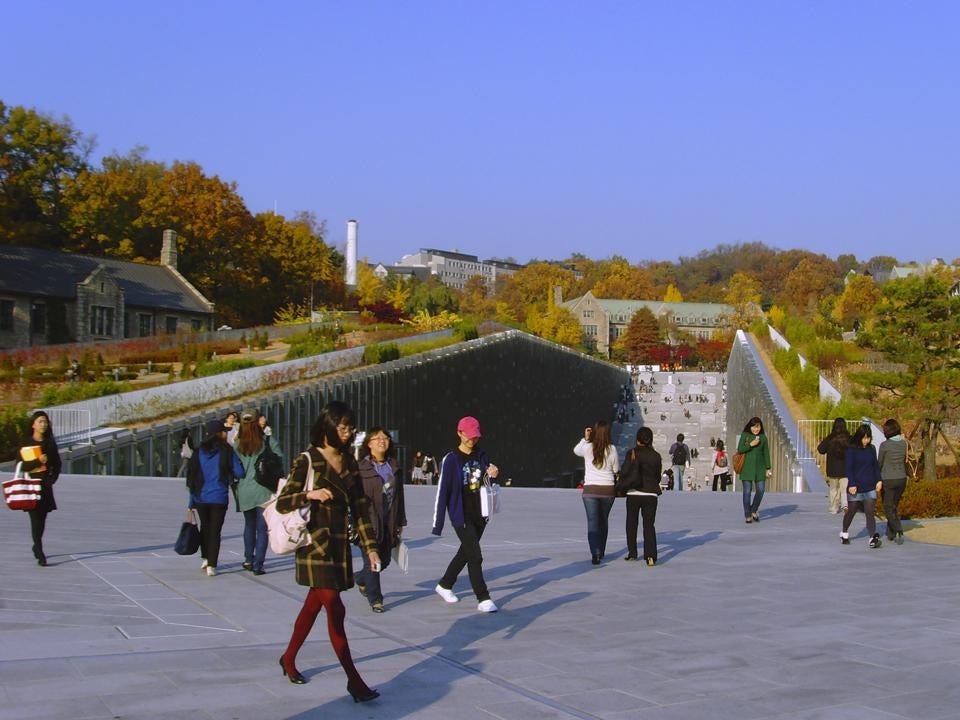The attention to landscaping, at times crossing the border of art, is a recurring issue in his practice, at all scales of the design. His visions force commonplaces and often subvert traditional relationships, without ever losing sight of that spectacular dimension contemporary architecture at the turn of the century has made us accustomed to.
In Italy it is extremely interesting to make a comparison between the French architect and Naples, a city where multiple strata and contradictions — in history, the landscape and culture — coexist in an unstable balance. Here Perrault penetrated the urban strata, conceiving a large glazed roof to shelter the underground piazza and the existing railway station, bringing new life to one of the city's main public spaces.
Margherita Guccione: You designed and built in many countries and in Italy as well. What does it mean to work here?
Dominique Perrault: It is a matter of rhythm! Working in Italy means working enormously, long before the project gets its funding, and working even more when the project has gotten it!

History is a method to explore a field. History of architecture is a way to deal and understand architecture. Italy, like France, has a long and rich history, punctuated by cultural revolutions. The linearity of history is revealed by the succession of styles in architecture: Ancient, Classical, Romanesque, Medieval, Gothic, Renaissance, Baroque, Modern, Contemporary, Post Modern...
This classification allows to talk about architecture, to read architecture through its physical reality: shapes, matters, construction principles related to state of art.
History is an intellectual construction, which works as a self-sufficient story. History has its own reality, I don't think it is dynamic enough to grasp the physical reality of territories.
Somehow, I relate to history as a tool to understand the value of a site, but never as an end. This year, we won the competition for the restructuration of the Chateau de Versailles Dufour's pavilion. Two years ago, the renovation of Dobrée's archaeological museum in Nantes. Those sites have both a very high historical value. In my work, I certainly took into account this historical reality, but I used the existing situation as a material to create new situations.
I would say that my attitude towards history is not heretical, I simply take distance from too historicist and conservative discourses.

I don't oppose geography to history. It is rather a question of method, of priority. I don't deny the historical reality of architecture to promote the geographical one.
As an architect, and despite the classical architectural education I received, my work aims to build architecture upon geography. I consider geography, that is to say territories' characteristics and specificities, with their topography, their altimetry, and their surrounding elements revealing the territories' inner being as the true materials of architecture. I use the context as a material, just as concrete, glass or metal.
Although it is very possible to analyze a site from an historical point of view, perceiving the dialectic mediations of its history, integrating upcoming buildings into a linear process, I honestly believe that geographic perspectives are stronger than historical ones. Truth and evidence of the territory are more relevant to architecture than history. The historical approach is far from the context reality, it is an intellectual approach whose method does not give keys to grasp the current complexity of territories.
I would understand and analyze territories through the physical relations of architecture elements.
I would say that my attitude towards history is not heretical, I simply take distance from too historicist and conservative discourses

Architecture is something authoritative. Architects build, transform territories, change the environment from one to another. They have the power of getting rid of the past in order to draw the future.
When architecture comes to life, new volumes appear, modifying the landscape's pre-existing reality, erasing and creating views, shadows, changing the perception of the surrounding environment. It affects the whole human organization around. I think such a power entails great responsibilities.
As far as I am concerned, I try to minimize the authoritative aspect of construction in order to allow further situations. Sometimes when the context requires it, I make architecture disappear. I don't like walls so far. As a contemporary architect, I think it is necessary to create in-between space: in-between public and private, in-between interior and exterior, in-between culture and nature. I try to blur the limits of architecture and landscape. To materialize this unification, I make a specific use of materials to give architecture the physicality or the absence needed: void, vegetation, metal mesh, glass...
Considering the current situation (environmental and economic crisis, demographic issues …) I am very sensitive to BIG's work. Their studio brings vitality and freshness in architecture by questioning forms and uses. With their own methodology, their studio is reinventing buildings' limits, in-between spaces. They bring architecture where it should go: beyond architecture itself.
MAXXI — Museo nazionale delle arti del XXI secolo
Rome
22 March 2012, 17.00


